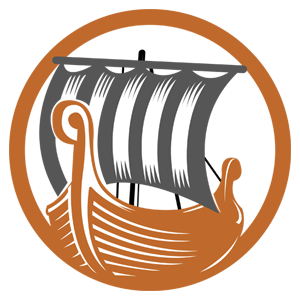Flying into Cartagena, we are greeted with the Penelope Ruth sign. Dramatically different weather, this is a Caribbean coastal city with the humidity and heat we hadn’t felt before. Our Hotel Bantu, a lovely boutique charmer, was located in the middle of the most colonial and historical part of the city. The rest is more modern and more Miami. Outside the walled city the rocky coastline is rugged and not really designed for sunning. The walled city is huge and like a labyrinth with many similar plazas which means you can get as lost here as in Venice, Italy.
Julio, our guide, picked us up and took us to Fort Castillo de Felipe, probably the best engineered fort I’ve ever seen. Built in the 1500s, it is probably the reason Colombia doesn’t speak English. It’s on a 130 foot high hill strategically towering over the city. In 1741 the English Navy with 23,000 men and 2,000 cannons was defeated by 3,000 Spanish troops. To add insult to injury, there is a plaque brought with the British to the battle that celebrates the English victory over Spain–that’s how certain they would be victorious. One more insult to that injury, the victorious Spanish commander Don Blas had one leg, one arm and one eye. So because of the victory, Colombians are speaking Spanish not English.
Julio, having been a tour guide for 40 years, had many stories. He described the complex labyrinth of tunnels in the fort, some for sleeping and some for hiding and attacking the enemy. One tunnel goes under the water surrounding the fort to the walled city. Our guide was the last to have to cross underground from this tunnel, without light to the old town. Water began seeping from the walls and at one point he was waist deep in water. He still has nightmares 40 yrs later. He had to do it as a final test as guide…it was approximately 250 yards, he attempted to give up and was forced back. It took him 2 1/2 hrs. in utter darkness.

Fort Tunnels
Now, he’s a seasoned veteran and is in high demand. Julio was incredibly enthusiastic. and he had this verbal style where he seemed blown away by our insights and comments saying “YESSS!” and “EXXXCELENT” nodding exuberently the while–making us feel like the top of the class.
San Pedro de Majagua
The next day we were picked up and escorted to the docks for a speedboat trip to an island San Pedro de Majagua about 45 minutes away. Now we felt like we were in the Caribbean with the white powder sand and turquoise aqua water.

San Pedro de Majagua

We signed up for the snorkeling boat and were taken out to a reef which still had coral along with rainbow colored fish and warm water. Back to the island for a fresh fish dinner with coconut rice (our fav!). Coconut rice is a staple here at Cartagena. One speed boat ride later and we were back in Cartagena.
Our last night was at a restaurant Club de Pesca built into a smaller fort with a romantic view of the shimmering water with several boats stopping to let off passengers. Morning, we leisurely breakfasted with the hotel’s resident toucan who deservedly won a prize for “The Best Beak Ever” (I awarded it.)

We strolled the colonial city and for our last Cartagena hurrah ate at La Cevicheria. Nick, my son, and I share a love for ceviche, raw fresh fish cured in citrus juices–a little different than sushi because the citrus juice has a chemical reaction of “cooking” the fish. This was one of the best!
Santa Marta and Tyrona National Park
Picked up at 3:00 PM, we were on way to our last destination–Santa Marta, a four hour drive north from Cartagena also along the Caribbean Sea. It is the oldest city in Colombia founded in 1525. On the way we passed a highway sign you don’t often see. Hard to see, but that is an anteater drawing on the sign.

Caution! Anteater crossing!
We got to the Decameron Hotel after dark, so the beach view was muted. This is an all-inclusive hotel, so all food and drinks were included. Interestingly, 95% of the guests were Colombian with families. We were picked up bright and early by our guide Angie, Young and cute, she was a cheerleader for Santa Marta which is going through many new improvements–an international airport, several hotels, and is being geared up to be a less crowded Cartagena. Our destination, however, was Tayrona National Park, a jungle paradise with sandy beaches and rugged hikes. We took a strenuous hike for 2 ½ hours to an outdoor “restaurant” shack overlooking a remote sandy beach.

Because Raphael’s knee had been recently operated on, he was reluctant to make the trek back and found out he could rent a horse. That turned out to be an excellent idea and was a fun ride, while we have ridden horses before, we had never been on a horse traversing steep inclines, rocks, narrow passages and precipices over jungle streams, so kudos to the horses!

One interesting thing–there is an indigenous group called Los Kogus living in the deep reaches of the park. Their civilization goes back to Pre-Colombia. They remain closed off from civilization and do not speak Spanish. We did see a few who were selling trinkets to the tourists.

Back to the hotel, for a luscious dip in the blue Caribbean Sea, one last sunset, and the next morning we were off. Back to Encinitas.


